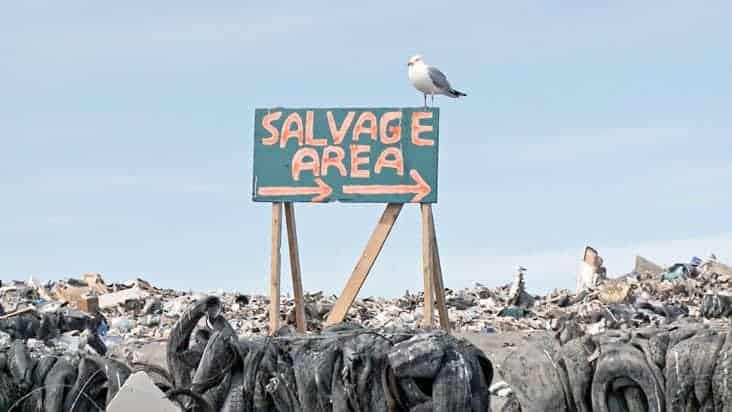A film about Yellowknife’s storied city dump is set to hit the film festival circuit in the new year.
Amy Elliott, documentary filmmaker based in New York said she is putting the finishing touches on the film and applying to film festivals. For much of the past decade, she has been working with producer Liz Donius to complete the picture. As of now, there are no screening dates.
The film is based on footage shot on five separate occasions between 2009 and 2014 and follows the development of the landfill as one of the “last great dumps” to salvage items.
“We are still editing, but we are close,” Elliott said this week. “We have a rough cut and have done test screening and it went really well. We are applying at festivals this fall and [are finishing] fine tuning and getting the final score locked in. We met with the composer on Friday and believe it or not, after almost 10 years, we are pretty well ready to go.”
The film is Elliott's third feature documentary.
“My niche has been exploring places and people and culture that are informed by geographic place,” she said, pointing out that the film is consistent with her two other works: “World's Largest” about places that attempt to make the biggest landmarks, and “Wicker Kittens” about competitive jigsaw puzzling in Minnesota winters.

She said her Yellowknife-based film discusses how the dump became increasingly regulated over the five years until it started the three-cell salvaging system. She said the dump's evolution is an indicator of a modernizing capital city becoming more connected with the world.
“The culture of salvaging at the dump is very much directly connected to the physical attributes of Yellowknife being so cut off and needing to reuse things and the idea of having a make-do attitude of not being wasteful,” she said.
“As that changes and the world becomes smaller, it becomes easier to buy things than fix things.”
The film's process was a bit odd, she said, because she is a born and raised New Yorker and initially aimed to locate a landfill to film in her own area.
“I had always known that I wanted to make a film about a dump,” she said. “Growing up I always went to the local dump with my Dad and it was always a fun watering hole for a community in terms of what people throwaway and what people come and salvage.
“Yellowknife was not my first choice, but when I looked locally, here in the states pretty much every landfill is off limits and closed because of liability and the privatization of waste management.”
One of the characters in the film is Tales from the Dump columnist Walt Humphries,
“I’m glad it is finished and hope it does great things,” he said, adding he has remained in contact with the director but has not seen the final cut yet.
“I hope people take away from the movie that the dump is an untapped resource and should be open for salvaging. A lot of money gets thrown away in the dump and there is a lot of stuff there that can be reused or recycled. I am hoping it changes people’s attitudes.”